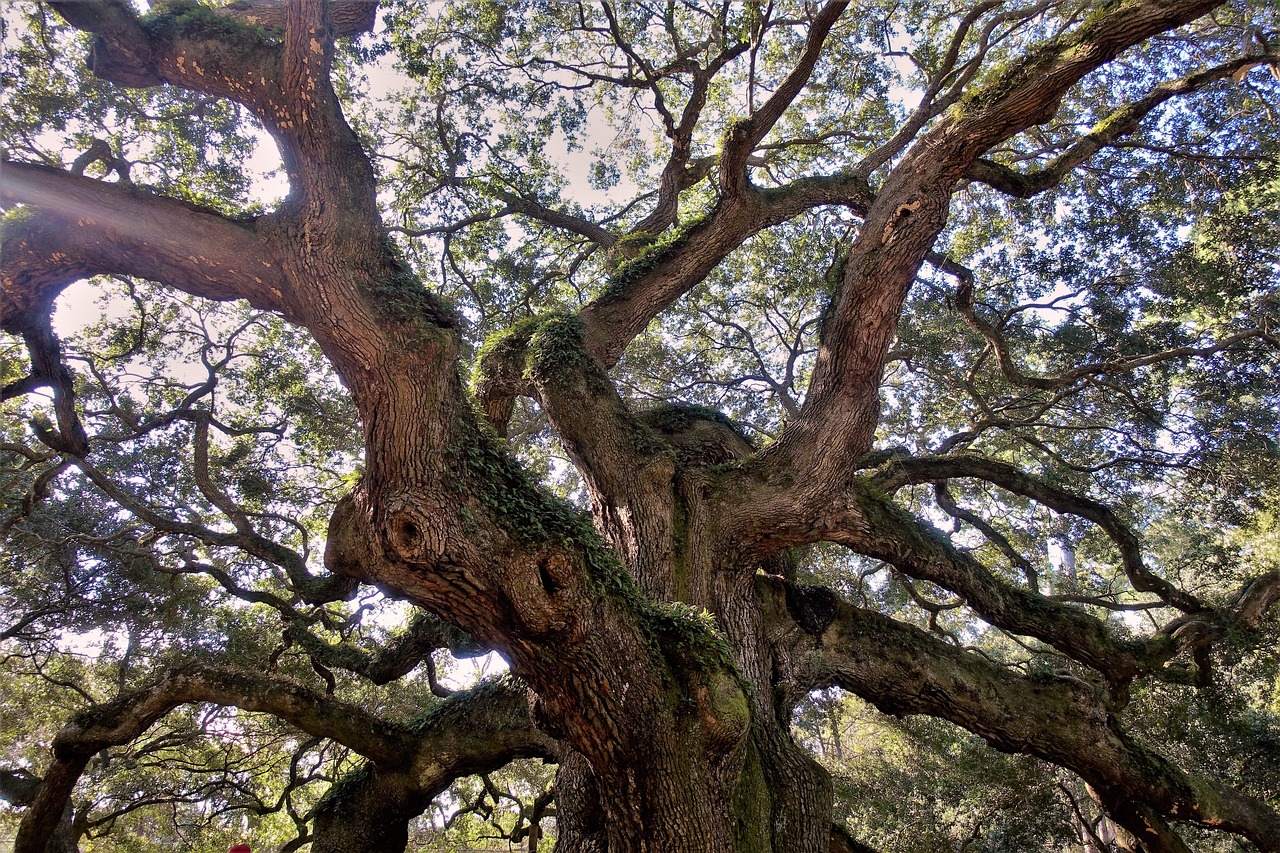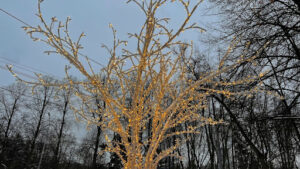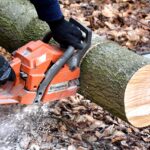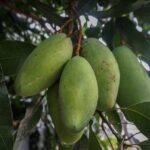Best Time to Prune Live Oak Trees: Expert Guide

When is the best time to prune live oak trees? It’s a question I get asked a lot, and honestly, it’s not as simple as just picking a random day. Timing is everything when it comes to keeping these majestic trees healthy and strong. I’ve learned that pruning at the wrong time can actually do more harm than good, especially with live oaks. They’re susceptible to certain diseases, and you really want to avoid making things worse.
Understanding the Best Time to Prune Live Oak Trees
One of the biggest concerns is a disease called Oak Wilt. It’s a serious issue that can spread quickly, and the best way to prevent it is by being smart about when you prune. The beetles that carry the fungus are most active during certain months, and if you prune when they’re around, you’re basically inviting trouble. It’s like leaving your front door wide open during a storm.
So, what’s the general rule of thumb? Most experts, including those I’ve consulted, agree that the dormant season is the safest bet. This usually means late winter or very early spring, before the tree starts putting out new growth. This period minimizes stress on the tree and reduces the chances of attracting those disease-carrying insects. It’s a good idea to get a handle on your tree’s natural cycles to figure out the best time for pruning. For instance, I found that my live oaks seem to do best when I trim them after the harshest cold has passed, but before the real warmth of spring kicks in. This aligns with advice from arborists who suggest avoiding pruning from February through July to minimize the risk of oak wilt transmission. If you’re unsure, it’s always best to consult with a professional. They can give you advice specific to your area and your tree’s condition. I’ve found that reaching out to a certified arborist can really make a difference in keeping my trees healthy. It’s worth looking into local tree care services if you’re not confident in doing it yourself.
Why Timing Matters When Deciding the Best Time to Prune Live Oak Trees
When I think about pruning my live oaks, the first thing that comes to mind is, “When should I actually do this?” It turns out, the timing is a pretty big deal, and not just for aesthetics. It really affects the tree’s health, especially when it comes to fighting off diseases.
Oak wilt is a serious problem, and the way it spreads is directly linked to when we prune. This disease can move from tree to tree through insects, particularly beetles, that are attracted to fresh cuts. These beetles are most active during the warmer months, from spring through summer. If you prune during this time, you’re basically inviting trouble. The fungus that causes oak wilt can get into those fresh wounds, and once it does, it’s incredibly hard to stop. It cripples the tree’s water system, and honestly, it’s usually fatal.
So, avoiding pruning from February through July is my top priority to keep my oaks safe from oak wilt. This period is when the disease is most likely to spread. It’s like leaving the door wide open for the bad guys.
Here’s a quick rundown of why timing is so important:
- Disease Prevention: Pruning during the dormant season, typically late fall and winter, significantly reduces the risk of oak wilt transmission. The beetles that carry the disease are not active then.
- Tree Stress: Trees are less stressed when they are dormant. Pruning during their active growing season can be a shock to the system, making them more vulnerable to other issues.
- Wound Healing: Cuts made during dormancy tend to heal better and faster in the spring when the tree starts its active growth again.
It’s not just about avoiding disease, though. Pruning at the wrong time can also mean the tree doesn’t recover as well. Think of it like trying to heal from surgery during a really stressful time – your body just can’t focus on recovery as effectively. The tree is similar; it needs to be in a stable, less active state to handle the stress of pruning.
If you have a situation where a branch is clearly damaged, like after a storm, you might need to prune it right away, even if it’s during the risky season. In those cases, it’s a good idea to seal the wound immediately to prevent insects from getting in. You can find more information on proper wound sealing techniques at Texas Tree Surgeons.
Ultimately, understanding these cycles helps me make better decisions for my trees. It’s about working with nature, not against it, to keep them healthy and strong for years to come.
Best Time to Prune Live Oak Trees in Winter and Early Spring

When it comes to pruning live oaks, timing really is everything. I’ve learned that the best window for significant pruning work is typically during the late winter or very early spring. This period is ideal because the trees are still dormant, meaning they’re not actively growing. This dormancy helps them handle the stress of pruning better and reduces the chances of them getting sick from diseases like oak wilt.
Oak wilt is a serious concern for oak trees, and it’s spread by certain beetles that are most active when the weather warms up. These beetles are attracted to fresh cuts on trees, and if they’ve picked up the oak wilt fungus, they can spread it to healthy trees. That’s why avoiding pruning from February through June is generally recommended.
However, sometimes life happens, and a tree might need attention outside of this ideal window. For instance, if a storm has broken a branch or if a limb is causing damage to your house, you can’t always wait. In these emergencies, it’s important to prune as soon as possible. The key is to protect those fresh wounds immediately. Using a sealant or special paint on the cuts can help deter those disease-carrying beetles. It’s always a good idea to consult with a professional arborist if you’re unsure about the best course of action, especially when dealing with potential disease risks. They can provide guidance tailored to your specific situation and ensure proper techniques are used.
Here’s a quick rundown of why this timing works:
- Dormancy: The tree is resting, making it less susceptible to stress and disease.
- Reduced Beetle Activity: Fewer disease-carrying insects are around to spread problems.
- Faster Healing: The tree can focus its energy on healing the cuts once active growth begins.
While winter and early spring are generally the safest bets for pruning, always keep an eye on your tree’s condition and be prepared to act if damage occurs, even if it’s outside the typical pruning season. Safety first, for both you and the tree.
If you need to prune during the warmer months, remember to use clean, sharp tools. This makes for cleaner cuts, which heal faster. It’s also important not to remove too much of the tree’s canopy at once. Aim for strategic thinning rather than drastic reshaping. If you’re ever in doubt, it’s best to get advice from a certified arborist who understands the specific needs of live oaks.
Worst Times vs. Best Time to Prune Live Oak Trees
When it comes to pruning our live oaks, timing really is everything. I’ve learned that making the wrong choice about when to trim can actually do more harm than good. The biggest concern I always have is something called oak wilt. It’s a nasty disease that can spread really quickly, and it’s often carried by certain beetles that are most active during warmer months.
The absolute worst time to prune a live oak is during the spring and early summer, roughly from February through June. This is when the beetles that spread oak wilt are most active, and they’re drawn to fresh pruning cuts. If these beetles land on a fresh wound, they can transfer the fungus that causes oak wilt, which is often fatal for oak trees. It’s a serious threat, and I’ve seen firsthand how devastating it can be to a healthy tree.
So, what’s the solution? Well, the best time to do any significant pruning is during the dormant season. For live oaks, this generally means late fall or winter, from around July through December. During this period, the beetles are inactive, and the tree is better equipped to handle the stress of pruning. It’s like giving the tree a chance to heal before the busy growing season starts.
However, I know life happens, and sometimes you can’t wait. If a branch is broken from a storm or is causing immediate damage, like rubbing against your house, you might need to prune it right away. In these emergencies, it’s important to be extra careful. I always recommend using a sealant on the fresh cut immediately after pruning. This acts as a barrier to help prevent those disease-carrying beetles from being attracted to the wound. It’s not a perfect solution, but it’s a necessary step when you have to prune outside the ideal window. For any major pruning work, especially if you’re unsure, I always reach out to a certified arborist. They have the knowledge and tools to handle it safely, and they can advise on the best approach for your specific situation, like understanding the best seasons for pruning oak trees.
Here’s a quick rundown of what to keep in mind:
- Avoid: Pruning from February through June to minimize oak wilt risk.
- Best: Prune during the dormant season (late fall through winter).
- Emergency: If you must prune during the risky period, seal all cuts immediately.
Making the right choice about when to prune can save your tree a lot of trouble. It’s better to be safe than sorry when it comes to protecting our beautiful live oaks from diseases like oak wilt.
Identifying the Best Time to Prune Live Oak Trees
Figuring out when to prune your Live Oak isn’t just about picking a date on the calendar; it’s about observing the tree itself. While the general advice points to late winter or early spring before new growth kicks in, there are a few things I look for to confirm it’s the right moment.
One of the clearest indicators is the tree’s dormancy. If I can see that the tree has finished its active growing season and isn’t showing signs of new buds or leaves, that’s a good sign. This period, typically from late fall through winter, is when the tree is resting.
I also pay attention to the overall health of the tree. Are there any signs of disease or pest infestation? If the tree looks stressed or unhealthy, it might be better to hold off on pruning until it recovers, unless there’s an urgent need to remove damaged parts.
Here are some things I consider:
- Dormancy: The tree has dropped its leaves (if it’s a deciduous oak, though Live Oaks are evergreen, they still have a period of reduced activity) and isn’t actively producing new growth.
- Health: No visible signs of disease like wilting leaves or unusual spots, and no active pest problems.
- Weather: Avoiding extreme heat or cold, which can stress the tree further after pruning.
It’s important to remember that while dormant pruning is ideal for minimizing disease risk, especially from oak wilt, sometimes circumstances demand immediate action. Storm damage, for instance, creates wounds that need attention sooner rather than later to prevent further issues. In such cases, pruning is necessary, and proper wound sealing becomes even more critical.
Ultimately, observing your tree’s natural cycles and condition is key to determining the best time for pruning. If I’m ever unsure, I don’t hesitate to consult with a certified arborist. They can provide specific guidance based on my tree’s unique situation and local conditions.
Expert Techniques During the Best Time to Prune Live Oak Trees
When the time is right to prune your live oak, I find that using the correct techniques makes all the difference. It’s not just about grabbing some shears and going to town. For instance, I always make sure my tools are sharp and clean before I start. This helps make clean cuts, which is really important for the tree’s recovery. You don’t want ragged edges that invite trouble.
When I’m cutting, I focus on the branch collar. That’s the slightly swollen area where the branch meets the trunk or a larger limb. Cutting just outside this collar helps the tree heal properly. I also try not to remove too much of the canopy at once. A good rule of thumb I follow is to only remove about 25% of the live growth in a single pruning session. This keeps the tree from getting too stressed.
Here are some specific techniques I employ:
- Thinning: This involves removing entire branches back to their point of origin. It helps improve light penetration and air circulation within the canopy, which is great for the tree’s overall health.
- Heading: This is cutting a branch back to a lateral bud or a smaller lateral branch. I use this to reduce the size of a branch or to direct growth.
- Removal of Deadwood: I always look for and remove any dead, diseased, or damaged branches. These are easy to spot because they usually don’t have any leaves and might be brittle.
It’s also worth noting that if a branch is particularly heavy, I might use a three-cut method. This involves making an undercut a foot or so from the tip, then a second cut from the top a little further out to let the branch weight fall, and finally, a clean cut at the collar. This prevents the bark from tearing down the trunk.
When I’m pruning, especially if it’s outside the ideal dormant season, I’m always mindful of potential issues like oak wilt. If I have to cut between February and June, I’ll use a tree sealant on the wound. It’s a simple step that can help prevent beetles from being attracted to the fresh cut, which is how the disease often spreads. It’s a small effort for a big payoff in tree health.
For structural pruning on younger trees, or if I’m ever unsure about a specific cut, I’ll consult with a certified arborist. They have a deep knowledge of how to train trees for strong, long-term growth. It’s always better to get it right the first time, especially when you’re planting live oak trees and want them to thrive for years to come.
Common Mistakes to Avoid When Choosing the Best Time to Prune Live Oak Trees
When it comes to pruning our live oaks, I’ve learned that timing is everything, and making the wrong choice can really set your tree back. One big slip-up I see people make is pruning during the spring and early summer, roughly from February through June. This is prime time for the beetles that spread oak wilt, a really nasty disease that can kill these trees. It’s like leaving an open invitation for trouble. Always try to avoid pruning during these months unless it’s an emergency.
Another mistake is not considering the tree’s health when deciding to prune. If a branch is broken from a storm or rubbing against your house, that’s an immediate issue that needs attention, regardless of the season. Waiting can actually make the problem worse. However, for routine trimming, like shaping or removing deadwood, sticking to the dormant season is best.
People also sometimes over-prune. Taking off too much at once stresses the tree. It’s better to do a little bit each year during the right season than to try and fix everything in one go. Think of it as a gentle haircut, not a drastic makeover.
Here are a few common errors I’ve noticed:
- Pruning during the peak season for oak wilt transmission (spring/early summer).
- Not addressing storm damage or hazardous limbs promptly.
- Removing too much of the tree’s canopy at one time.
- Using dull or dirty tools can damage the tree and invite disease.
It’s easy to get impatient and want to prune whenever you notice something, but for live oaks, that patience pays off. The goal is to keep the tree healthy and strong for years to come, and that means respecting its natural cycles and vulnerabilities. Consulting with a professional can really help clarify when and how to prune your specific trees, especially if you’re unsure about oak wilt prevention.
Finally, I’ve seen folks forget about post-pruning care. After you make those cuts, especially during an emergency prune, it’s a good idea to seal the wounds. This helps prevent insects from being attracted to the fresh cuts. It’s a small step that can make a big difference in protecting your tree.
Long-Term Benefits of Choosing the Best Time to Prune Live Oak Trees
When I get the timing right for pruning my live oaks, it really pays off down the road. It’s not just about making the tree look good right now; it’s about setting it up for success for years to come. Consistent, well-timed pruning helps build a stronger, more resilient tree that can better handle whatever nature throws at it.
Think about it: pruning at the right time, usually when the tree is dormant in late winter or early spring, means less stress. The tree isn’t busy pushing out new leaves or flowers, so it can focus its energy on healing those pruning cuts. This leads to fewer problems with diseases and pests later on. I’ve noticed my trees seem to recover much faster when I stick to the recommended schedule. It’s like giving them a head start on the growing season.
Here are some of the benefits I’ve seen:
- Improved Structure: Regular pruning, especially when the tree is young, helps develop a strong central leader and well-spaced branches. This prevents weak crotches that can break under the weight of snow or strong winds later.
- Disease Prevention: By avoiding pruning during peak insect activity, I significantly reduce the risk of introducing diseases like oak wilt. This is a big one for me, as I’ve seen how quickly that can spread.
- Enhanced Vigor: When I remove dead, damaged, or crossing branches, the tree doesn’t waste energy on them. This redirects resources to healthy growth, making the tree more robust overall.
- Better Air Circulation: Thinning out the canopy at the right time allows for better airflow. This helps the leaves dry faster after rain, which can also help prevent fungal issues.
I used to just prune whenever a branch bothered me, but learning about the tree’s cycles changed everything. It’s a small effort to check the calendar, but the payoff in tree health and longevity is huge. It’s about working with the tree, not against it.
It’s also about saving myself work in the long run. A tree that’s structurally sound and healthy needs less intervention. I’ve found that by pruning my live oaks every couple of years during the optimal window, I’m not dealing with major storm damage or disease outbreaks. It’s a proactive approach that keeps my trees looking great and reduces the chances of needing costly emergency tree services.
Knowing the best time to trim your live oak trees can really help them grow strong for years to come. Proper pruning at the right season helps prevent sickness and keeps your tree looking its best. Want to learn more about keeping your trees healthy and beautiful? Visit our website today for expert tips and advice!
Frequently Asked Questions
When is the absolute best time to prune my Live Oak trees?
Based on my experience and expert advice, the ideal time to prune Live Oak trees is during the cooler months, specifically from fall through winter. This period is when the trees are dormant, meaning they are not actively growing. Pruning during dormancy significantly lowers the risk of spreading Oak Wilt, a serious disease that can harm oak trees. By avoiding pruning when the trees are most vulnerable, I help ensure their long-term health and resilience.
Why is pruning during spring and summer considered risky for Live Oaks?
I’ve learned that the spring and summer months are when insects, particularly the Nitidulid beetle, are most active. These beetles are attracted to the fresh wounds left by pruning. If a tree has Oak Wilt, these beetles can pick up the fungal spores and spread them to other oak trees when they visit new wounds. Since Oak Wilt is deadly and has no cure, I strongly advise against pruning during these warmer, more active months to prevent disease transmission.
Are there any situations where I might need to prune a Live Oak outside of the recommended season?
Yes, there are exceptions. If a Live Oak tree suffers storm damage, like broken or hanging branches, I understand the need for immediate pruning to prevent further harm or safety hazards. In such urgent cases, it’s better to address the damage as soon as possible. When pruning due to emergencies, I always recommend using a sealant on the cuts to help protect the tree from potential infections.
How can I tell if my Live Oak tree needs pruning?
I look for several signs that indicate pruning might be necessary. These include dead, damaged, or diseased branches, as well as branches that are rubbing against each other or against structures like houses. Overly thick canopies that block light and air circulation are also a reason to prune. Sometimes, branches might grow in awkward directions, like straight down, which can also be addressed through pruning to improve the tree’s structure and health.
What are the most important techniques I should use when pruning?
When I prune, I always make sure my tools are sharp and clean to make neat cuts. I focus on cutting branches at the branch collar, which helps the tree heal properly. It’s crucial not to remove too much of the canopy at once, as this can stress the tree. My goal is to thin out the branches strategically rather than drastically cutting them back. I also avoid ‘topping’ the tree, which is very harmful.
What are the long-term benefits of pruning my Live Oak trees at the right time?
By consistently pruning my Live Oak trees during the optimal dormant period, I’ve observed significant long-term benefits. These include promoting stronger, healthier growth, enhancing the tree’s natural structure, and reducing the risk of disease like Oak Wilt. A well-maintained tree is also safer, as it’s less likely to have branches break during storms, protecting both property and people. Ultimately, proper timing ensures my trees remain vibrant and beautiful for years to come.



